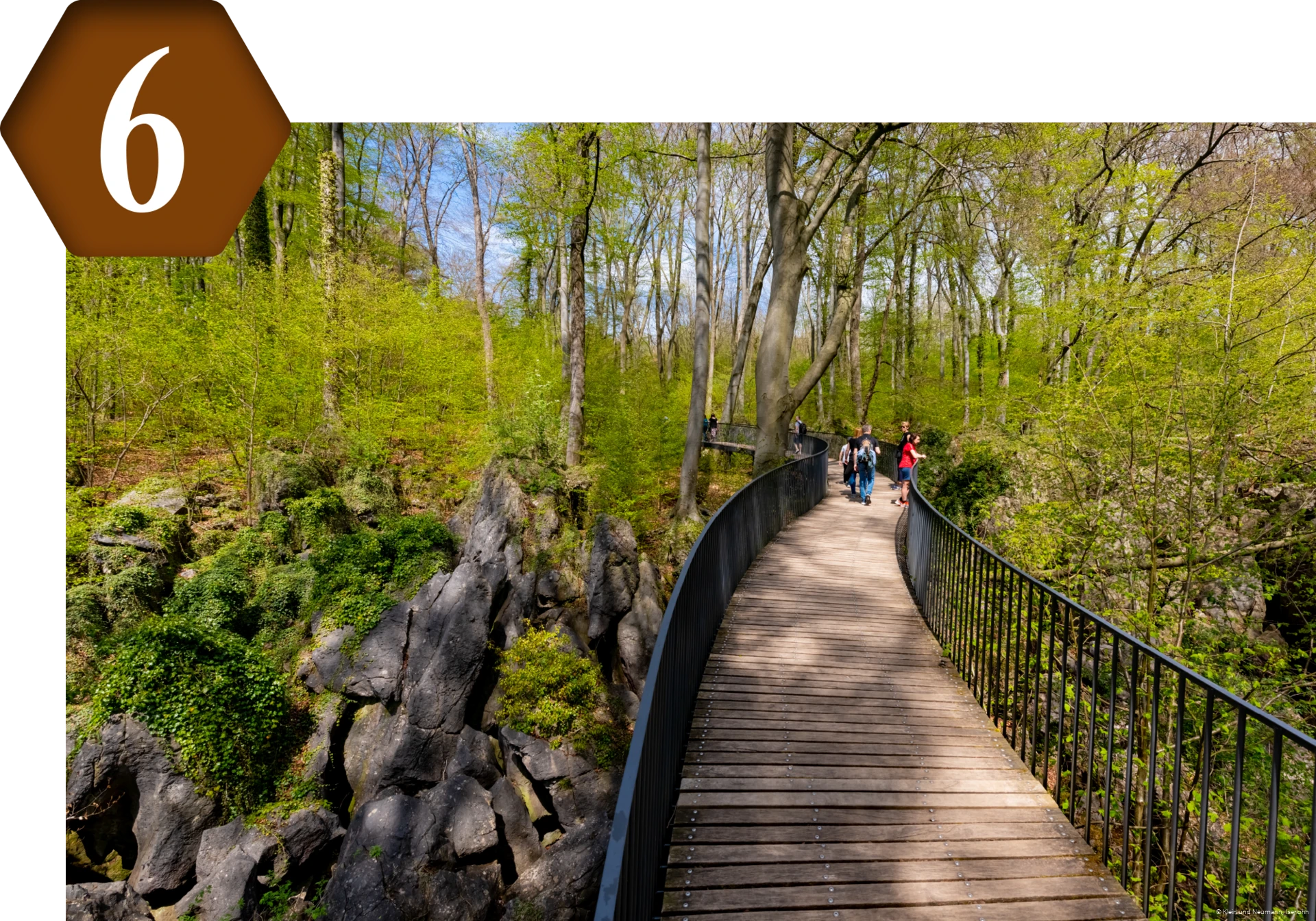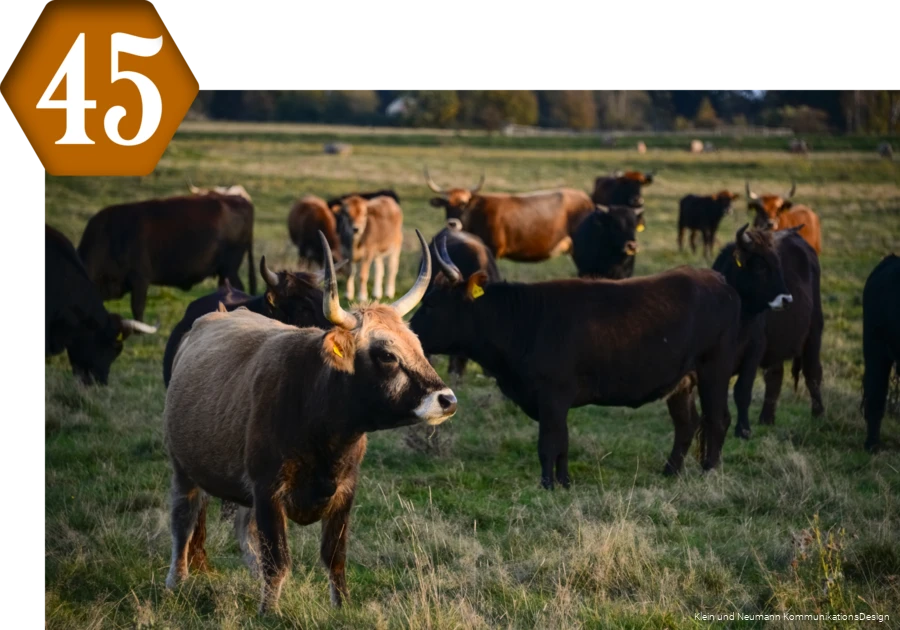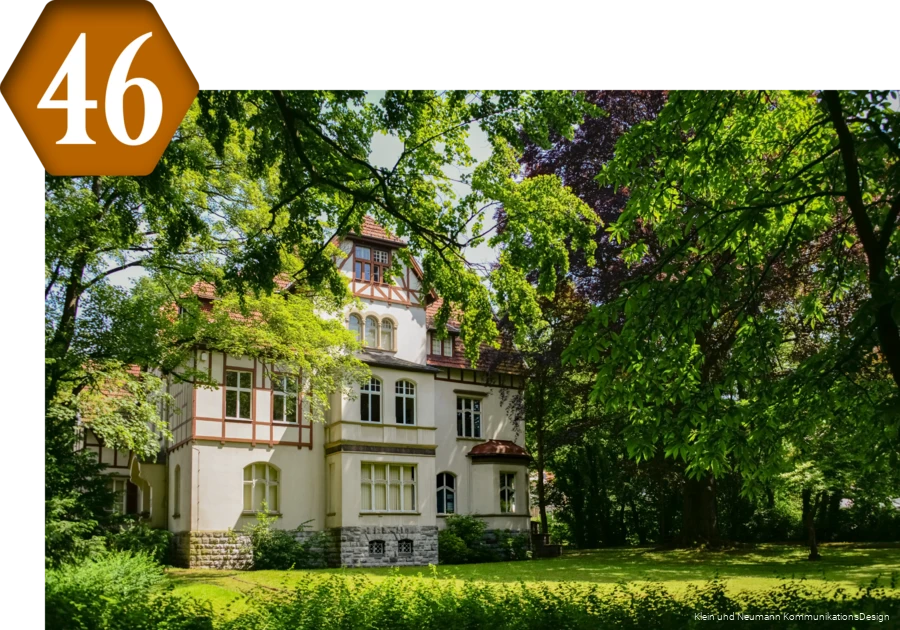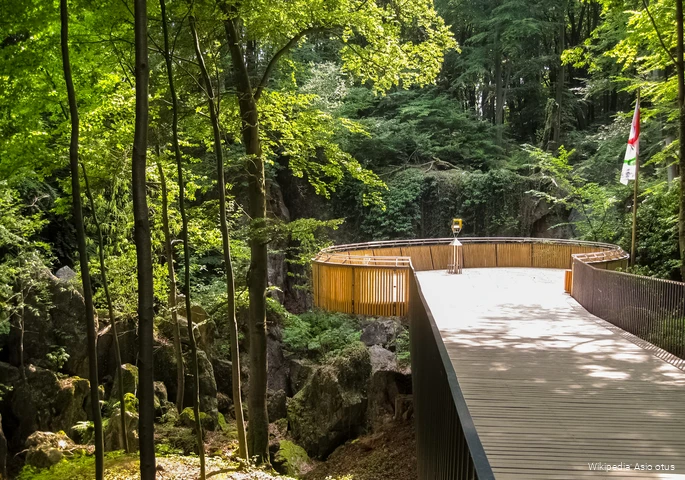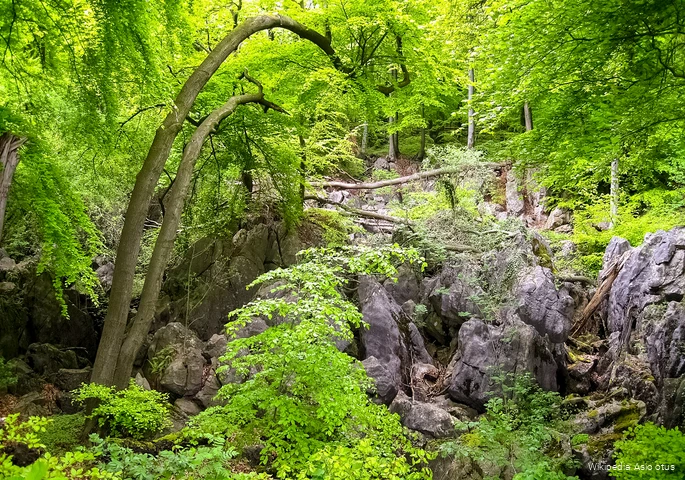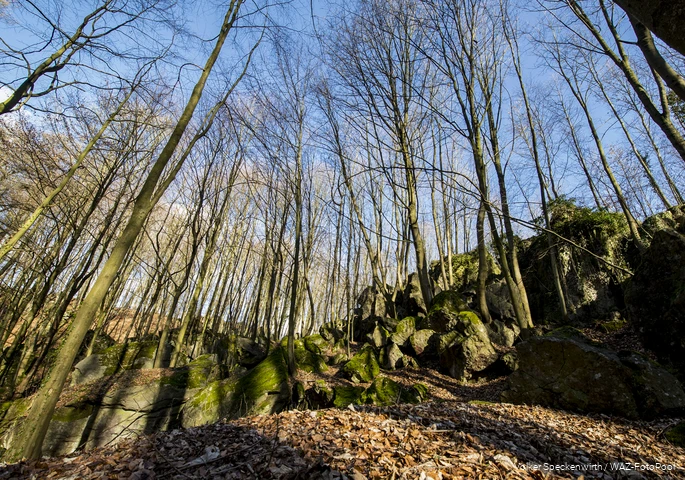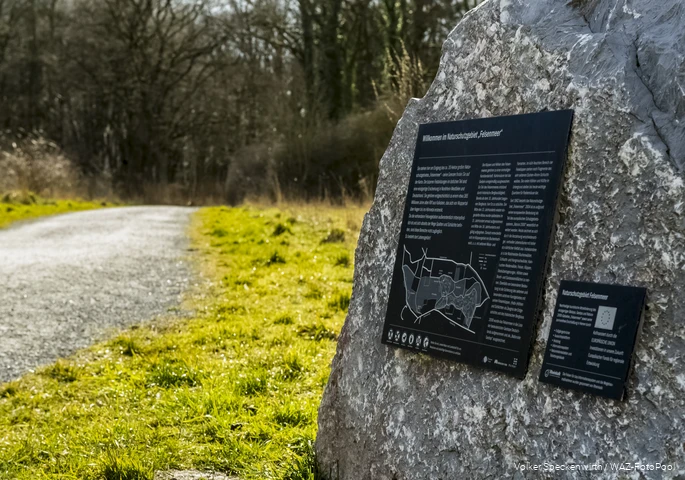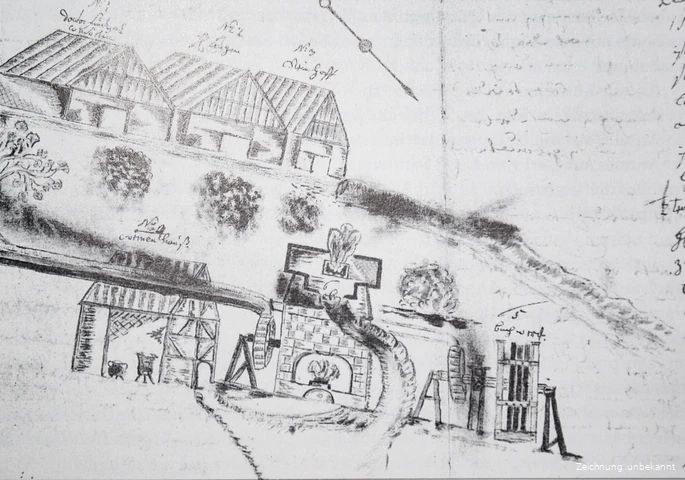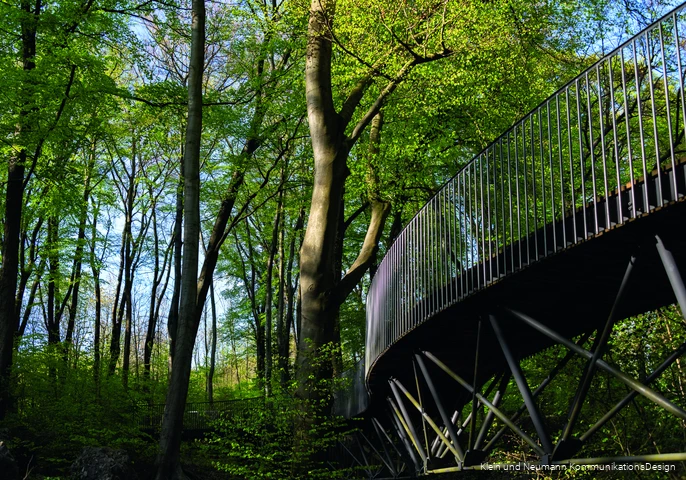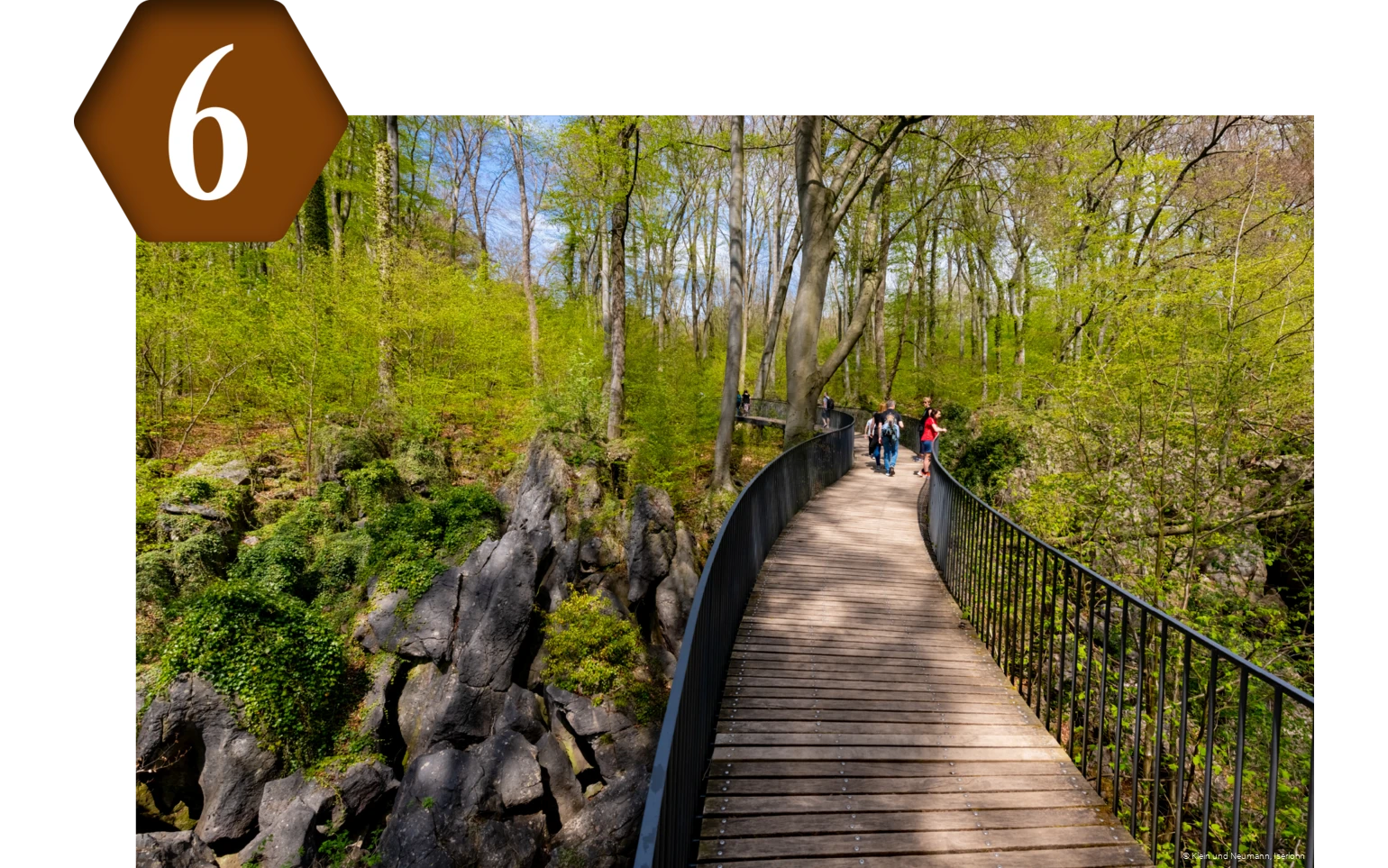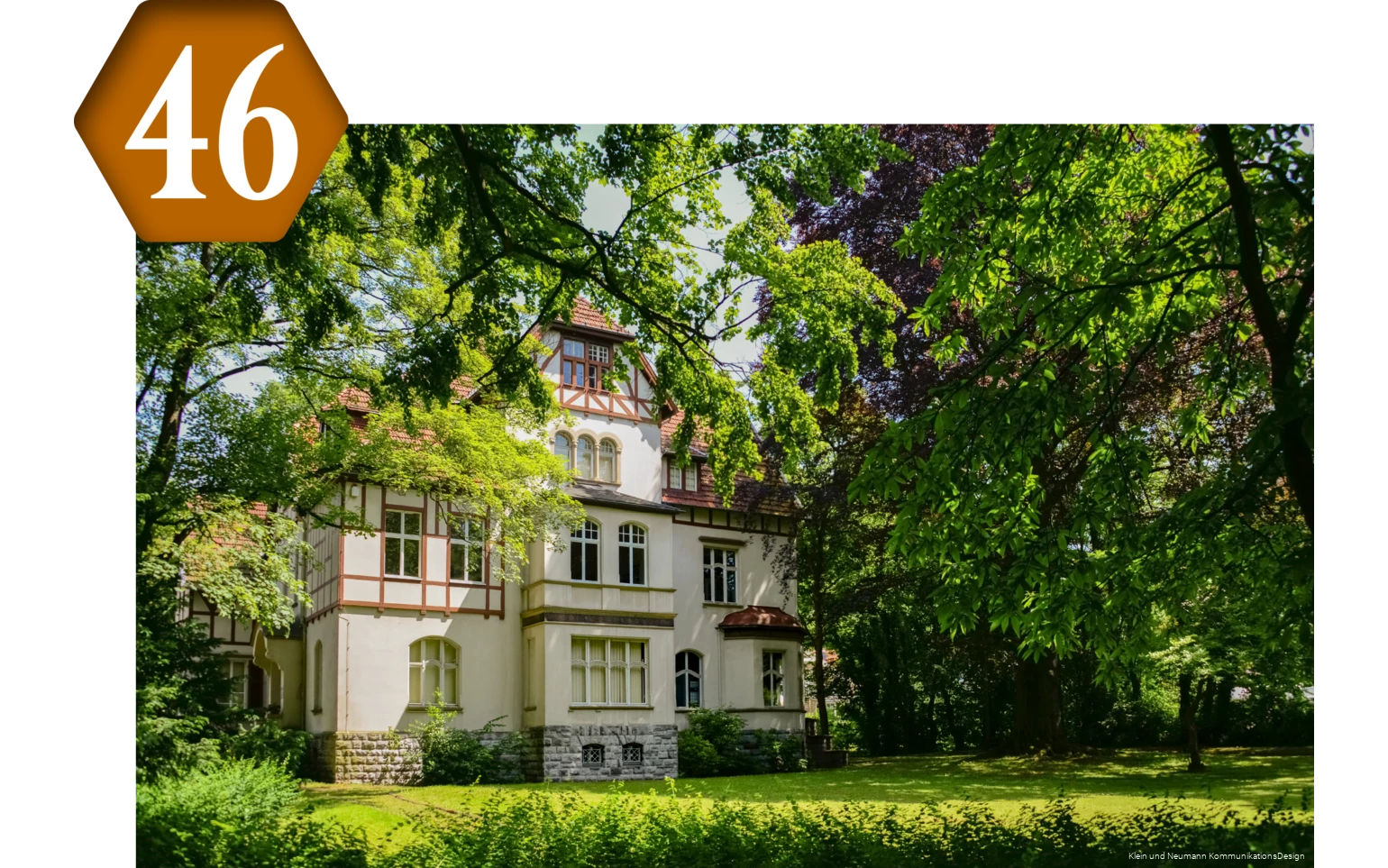Viewing platform in the Felsenmeer nature reserve
Felsenmeer Hemer
A freak of nature? That too, yes. The woodland covered in mosses and lichens with its wildly jumbled rocks - also called cone karst landscape - is like a precious window into the distant Tertiary era. But in addition, it teems with shafts and tunnels that drove generations of ore miners deep into the earth - at a time when cows still grazed in the Ruhr ...
- Infotext read more
-
… The dual significance as a geological and mining heritage site sets the Felsenmeer Hemer apart in Germany. A free-floating, undulating bridge including information boards and a lookout platform ensures that visitors can easily take a look at the rugged "national geotope" from above – while protecting the fragile ecological balance of the site.
The terrain, some 700 by 200 metres in size, has been a protected nature reserve since 1968. The beech forest that emerges from the rocks today dates back to the late 19th century. Before that, the area was dominated by mining, yet in no way similar to the highly industrialised Ruhr District. Probably as early as the 8th or 9th century, the first miners work in simple open-cast mining to find ore deposits formed from the iron-bearing limestone: red hematite, limonite and zinc spar. They use caves as storage rooms and transport routes and leave abundant traces as open shafts, adits and dumps. Smelting the pig iron in small bloom furnaces is a rewarding business, given an iron content of up to 60 per cent. As of the 14th century, they are forced to dig deeper for the ore. The "Eysenbergwerk Perik", later renamed "Helle", is probably the earliest deep mine in the county of Mark. The mine extends over three levels, goes 57 metres underground and includes 16 galleries, adit openings and shafts. Still, it is anything but a large-scale operation: in 1863, it employs a chief miner, a foreman and eight pitmen. They extract the ore as close to the earth's surface as possible - the uppermost level is only seven metres below the surface. As a consequence, collapses and sinkholes occurred again and again, in some cases continuing to this day.
In 1871, all mining activities ended, the ore mines fell into oblivion and, according to folklore, as nature moved into the bizarre crevices and fissures, so did dwarves and giants. Perhaps this is why a part of the rocky outcrops in the Hemer Felsenmeer is called "Paradise" today.
Steel Time Travel Destinations Nearby
The "Steel Time Travelers" Luise & Alfred: Felsenmeer Hemer
Al:
Lu? Luhuuu where are youuu? You wanted to show me the sea. Here everything is full of stones and abysses ...
- Read more dialog text
-
Al: Lu? Luhuuu where are youuu? You wanted to show me the sea. Here everything is full of stones and abysses.
Lu: This is Kaaaa-alk - like at home in the Hönnetal. I'm here Alfred - submerged! This sea has it all: iron ore was mined here 1,000 years ago.
Al: Of course - and then everything collapsed. Do you want to make me believe that dwarves were at work here and Alberich himself hoarded his gold treasures?
Lu: I leave that to your imagination, look there - a gnome and there - a magic castle. Hoo-hoo!
Al: Now leave the fisimatenten! Reinicke fox, Grimbart badger, eagle owl and fluttering mouse - there are certainly plenty of these fellows here - but no gloomy scary figures! And this is pure lime, you say?
Lu: No way! We have enough lime quarries for your ravenous blast furnaces. This one stays as it is! And that brings us back to the sea. They say the lime is nothing but the remains of a reef in a primeval sea!
Al: ... and soon Moby Dick will appear! A sea in the Sauerland - tsss!
Visitor information
Address:
Infozentrum Naturpark Sauerland-Rothaargebirge
am Sauerlandpark Hemer
Deilinghofer Str. 71
58675 Hemer
Phone: 02372/ 551 6110
info@sgs-ev.de
www.felsenmeer-hemer.de
Special guided tours on mining history are offered by the Speläo-Gruppe Sauerland e.V.
Wolfgang Hänisch: 02372/ 80704 (www.sgs-ev.de)
Opening hours:
The area is accessible 24 hours a day.
![]()
![]()
![]()
![]()
